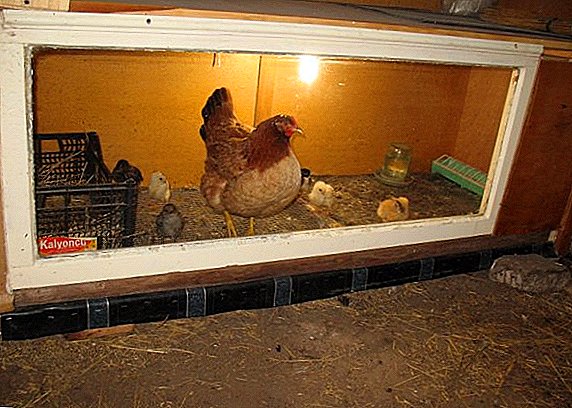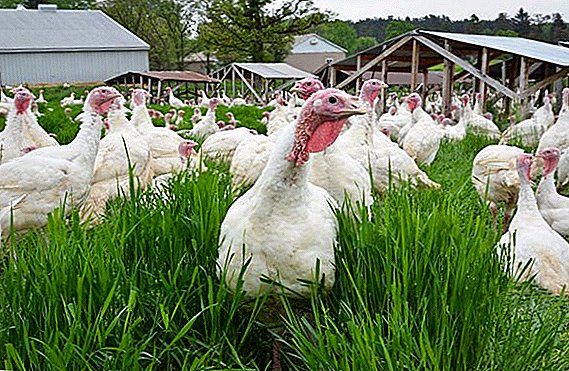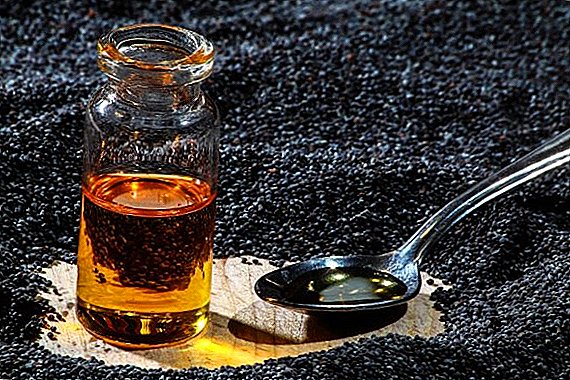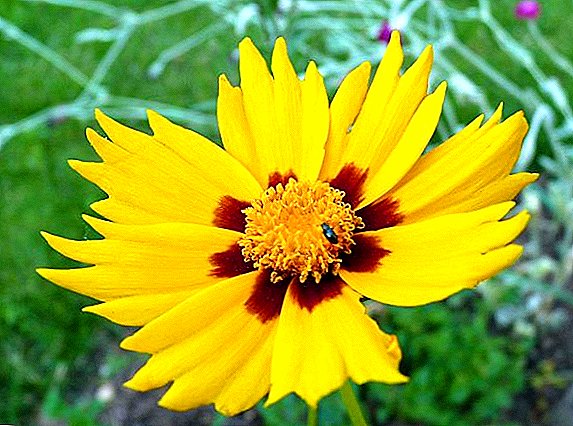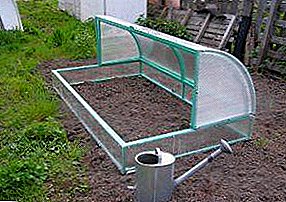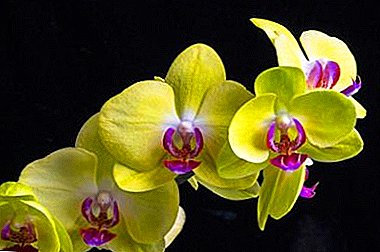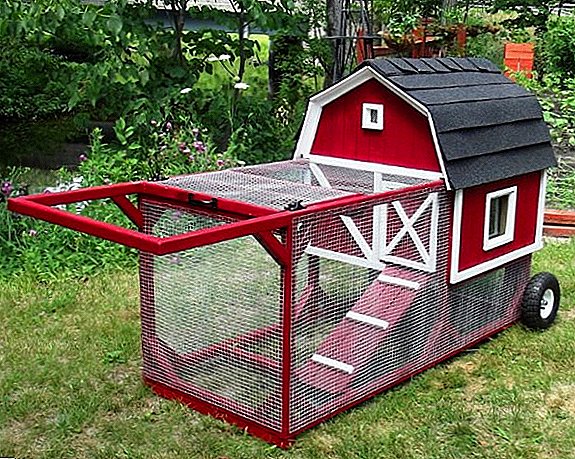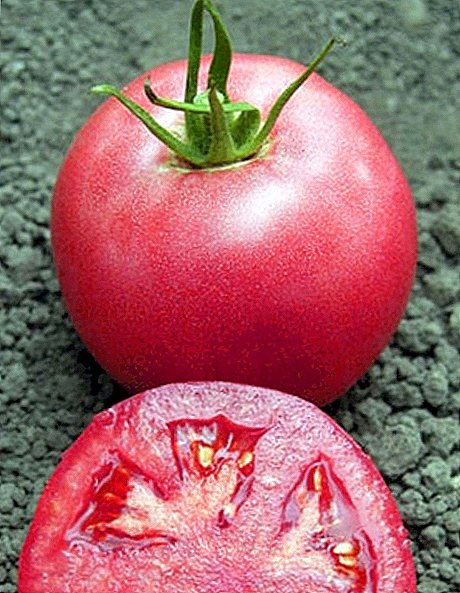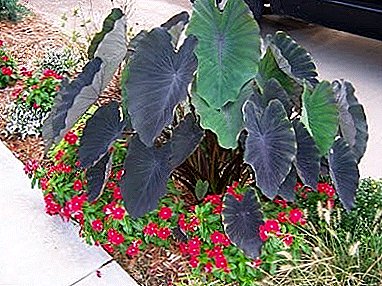
Taro - exotic perennial from the humid tropics.
Tropical plant loved flower growers for their unpretentiousness and exotic look of large leavespleasing the eye all year round. In ancient times, tarokia has been valued since ancient times. vegetable culture.
Taro (Colocasia) families Aroids originally from Southeast Asia. Perennial, belongs to the genus evergreens and has no less 8 species, there is a close relative with him - alokazy.
Tuberous rhizomes, are used in food. Some tubers are found in both flower and grocery stores dietary product, and for the presence of starch are compared with potatoes.
At the plant missing the stem, and large leaves, growing almost to half a meter, are located on long petioles. For their particular shape and size, an unofficial nickname has appeared: "ears of an elephant". The leafy plates of a herbaceous perennial are heart-shaped or thyroid.
The fruit is a small orange or red berries with a few seeds.
Flowers at tarokaziya inconspicuous, small.
Rarely appear in indoor conditions.
the main pride - bright, green, with splashes of a different color, with the original wavy edge of the leaves.
Due to them, a tropical guest looks advantageous and alone, and in combination with other plants.
Types of herbaceous perennial and photo
The impressive size of the tropical handsome more fit for greenhouses, indoor pools, gardens. However, some species are found in the form indoor plants.
Giant
The size corresponds to the name, and in nature the height of the plant reaches up to 3 metersLeaves are thick, ovate-crescent, length reaches 80 cm, width - 70 cm, on them veins are brightly visible. Rhizomes - tuberiform. Cob length up to 20 centimeters. How does the "giant taro" can be seen below in the photo:

Ancient
Ancient Taro has a few more names - edible taro, Dashin. This vegetable crop is now specially cultivated in many regions of Southeast Asia.
Leaves, shoots, tubers are used in food. Tubers are rich in vitamins and nutrients. They are made from flour, alcohol, used in cooking. Edible varieties differ the color of the pulp of tubers and their mass: some reach up to 4 kilograms. Taro or taro edible in the photo below:


Attention!
Taro is eaten only after cooking. Any part of the plant is first fried, boiled, stewed. It is impossible to eat raw, as the juice of kolokozii is dangerous.
Water
All types of tropical perennial love moisture, for water tarry it is especially important. Habitat habitat in reservoirs, in low places. Water tar with thick foliage has reddish stolons, reaching 1.5 m, and about one centimeter in diameter. The photo below shows the “Colocasia of the water”:

Deceptive
In the wild, it grows in the tropics of the Himalayas - on wet areas of mountainous slopes. The thyroid shape of the leaf plate. The width of the leaves - 20-30 centimeters. Rhizome - tuber. “Taro is deceptive” is shown in the photo below:

Care features
 Taro unpretentious. With proper care, perennial all year round will delight chic appearance. For indoor flowers, the rest period is optional.
Taro unpretentious. With proper care, perennial all year round will delight chic appearance. For indoor flowers, the rest period is optional.
From open ground for a cold period, the plant is removed. With the advent of winter, perennial tubers are dug out and stored at a temperature of about 10-12 ° C until early March. In spring, the tubers are planted in pots, and in a greenhouse immediately in the ground.
Like all aroids, requires careful handling. To prevent poisonous juice from harming the plant, it is necessary to protect small children, pulling everything in their mouths, domestic cats and dogs poking their nose everywhere.
Caution should be observed when transplanting.
Attention!
Taro is poisonous. Juice causes swelling of the larynx and oral mucosa. Burning and pain from contact with skin. Eye contact may result in conjunctivitis, and in more complex cases, changes in the cornea.
AT home conditions You can grow any kind of representative, if only there was an appropriate space. With unpretentious evergreen perennial, if desired, can handle a novice in floriculture.
Humidity and watering
As a tropical resident, the plant prefers warmth, light, and moisture.
The lack or excess of moisture will immediately affect the general form. When watering, it is better to adhere to a certain balance: to moisturize more often, but not to fill in: the ground should have time to breathe.
Irrigation rules are simple:
- spring and summer - frequent watering;
- in winter - moderate;
- land can not be overdry;
- stagnant water will adversely affect the root system;
- water for irrigation should be settled.
 The plant reacts sharply to the humidity of the air, therefore spraying is an obligatory procedure for it.
The plant reacts sharply to the humidity of the air, therefore spraying is an obligatory procedure for it.
Watering alone, especially in the warmer months, will not be enough.
Additionally, a vessel with water is placed next to it, or the pot itself is placed in a tray filled with wet expanded clay.
In the cold period, moistening is carried out with all of the above methods, except spraying.
Comfortable temperature and lighting
Kolokoziya, loves the light, but not direct sunlight. The best exposure - windows facing west and east. Home culture can stand on the south side, provided that the shading is provided. Windows to the north, on the contrary, will not provide the necessary lighting, which can be added with the help of additional lighting.
At temperatures below + 15 ° C, a thermophilic tropical plant begins to lose leaves. Therefore, the minimum temperature is plus +20 ° C in the summer and plus 15 ° C in the winter. In addition to cold, tarry does not tolerate drafts.
Attention!Plant species with monochromatic leaves will tolerate a lack of light. A motley, diffused light is needed. In this case, the bright pattern will not fade, and the sheet will not lose its appeal.
Features care after purchase
 No matter how the purchased plant looks, transplantation is obligatory in a new container filled with fresh soil.
No matter how the purchased plant looks, transplantation is obligatory in a new container filled with fresh soil.
From the roots is necessary remove the old layer of earth and carefully consider the plant.
The rotten parts on the tubers, if any, are cut and processed with fungicide and dried.
The damaged area can also be sprinkled with charcoal. After the manipulations, when the plant dries out, place it in a new soil.
Dried leaves are also removed. A pot with a new plant is placed in a warm and bright place.
Planting, feeding, transplanting
The houseplant can be transplanted annually from March to May, an adult - every two to three years.
For very large species, the pot is weighed down: stones are put on the bottom. In this case, the weight of the plant will not turn over the capacity.
In open ground, stored tubers are planted in March.
The earth is prepared for the plant nutrient, a mixture of peat, leaf, sod, added humus and sand.
Suitable land for leaf crops. Since the taro is necessary for abundant watering, the capacity for planting 1/3 is filled with drainage.
Each month, complex fertilizers are applied to the soil if the plant is in open ground. Pets plant is useful to water additional feeding every two weeks.
Breeding types
It is necessary to work with a plant Caution in gloves, all trimming to produce a sharp tool.
Tarokiya multiplies in several ways in early spring: tubers, cuttings, division of rhizomes.
Tubers
- the transplant of an adult large plant is combined with the reproduction process;
- tubers are separated and planted in a new nutrient soil;
- for the plants to start, they create greenhouse conditions for them, cover them with a film.
Rhizome
- remove soil from rhizomes;
- for work the sharp tool is used;
- a growth kidney should remain on each separated part;
- cut off part of the rhizome with a knife, sprinkle with charcoal;
- plant in a pot in a warm place.
The most difficult breeding type is seeds. They are planted shallowly in moist soil, regularly sprayed. The required temperature is observed in the region of + 22-24 ° C. Germination can take time from several days to three weeks.
Diseases and other problems
A spider mite, a scythe, aphid appear on tarry with improper care and can lead to its death. The tick is produced by the thinnest web, and small butterflies and aphids can be detected by watering and other works with the plant. In this case, the plant immediately processed by special substances.
- Taro immediately reacts to a lack of moisture, excessive lighting, low temperature.
- When the leaves wither, you need to adjust the watering and change the ground for a more nutritious.
- The leaves have lost their brightness - you need to pay attention to whether the plant has enough light.
- If the tips of the leaves turn brown, then there is a lack of moisture in the room.
Taro with proper care will actively grow, please the eye and will not create problems. Beautiful tropical plant perfectly will fit into an interior of the apartment, a personal plot, will emphasize design of a greenhouse or a winter garden.



